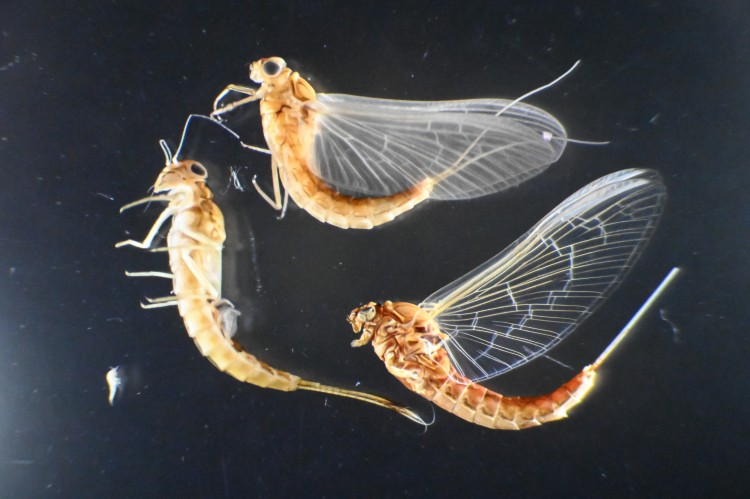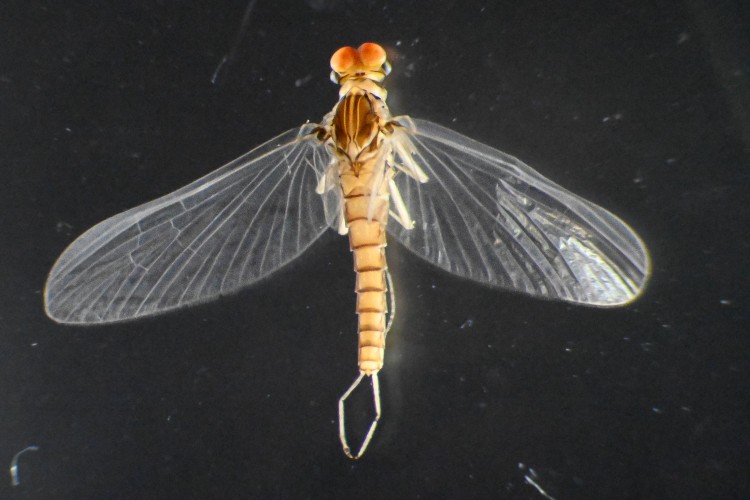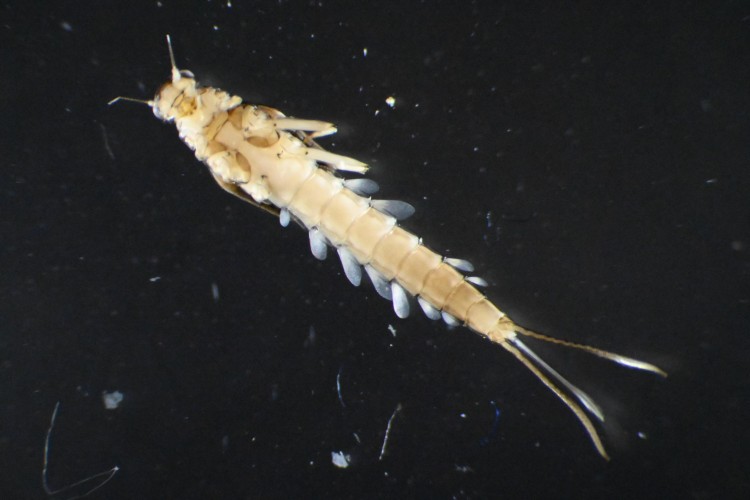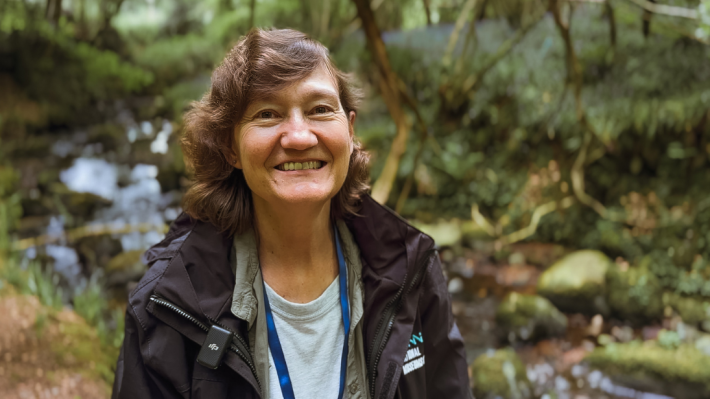
mayfly mothers
Dr Helen James, Senior Curator of Natural Sciences, explores the fascinating role of the mother in the unlikeliest of creatures: mayflies.
Explore our Natural Science GalleriesThe Life of a Mayfly

Mayflies are a group of insects that are associated entirely with freshwater ecosystems. They have very a short lifespan as an adult; in some cases, not even a day. The adults do not have functioning mouthparts - they don't need them!
The bulk of their lifetime is spent unseen under water, where, in their developing nymphal stage, they cling to rocks and aquatic plants, feeding on microscopic plants, animals, bacterial growth (periphyton) and organic debris. A few of them burrow in river banks under the water surface and in the sediments. Some species spend up to two years as nymphs before they are mature and ready to emerge to the winged stage for mating.
The Stages of Life

Mayflies are unique in modern insects as they have two winged stages; the sexually immature subadult, or subimago ('dun' in fishermen’s terms), and the mature adult, or imago ('spinner' to fishermen).
When they are ready to emerge from the aquatic nymphal stage, the subimago’s wings are covered in tiny water resistant hairs, which helps them to get out of the water. They then moult to the mature adult, losing their hairs and developing their mature characteristics such as longer forelegs in the males.
Mayfly Mating Season

At this point, they form mating swarms along the riverbanks. The males of many species have enlarged eyes and long front legs with which they grasp the female from below. Once mating is over, the female will lay her fertilised eggs under rocks in a stream, or on submerged stems of plants, and sometimes on the water surface, where they sink to the bottom of the waterbody.
Once this is achieved, the female’s time is over. Both she and the male die, leaving the next generation to hatch when the conditions are right.
The eggs hatch into tiny nymphs, and they grow gradually until they are ready to hatch into the flying stage, and repeat the cycle.

Under the Microscope
These images were taken with equipment funded by the Department of Agriculture, Environment and Rural Affairs. Watch research in action in the video below!






